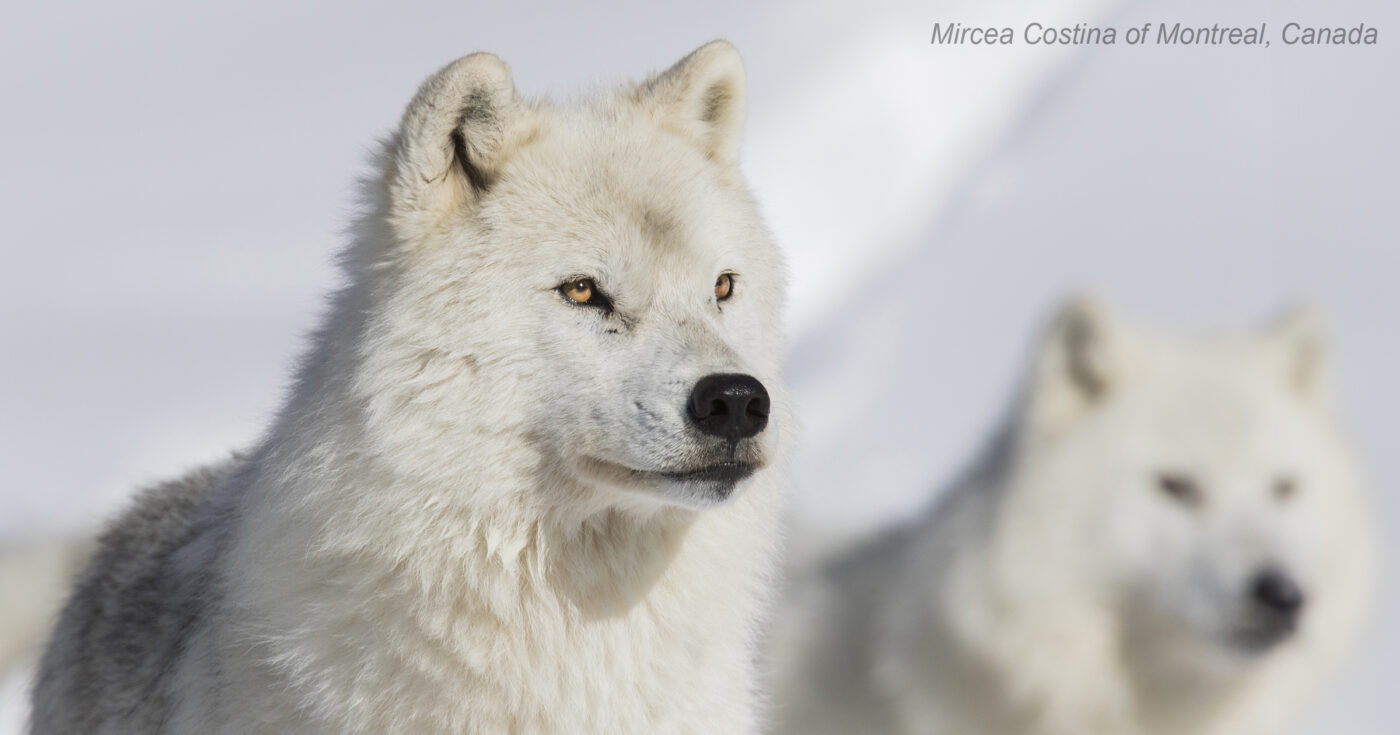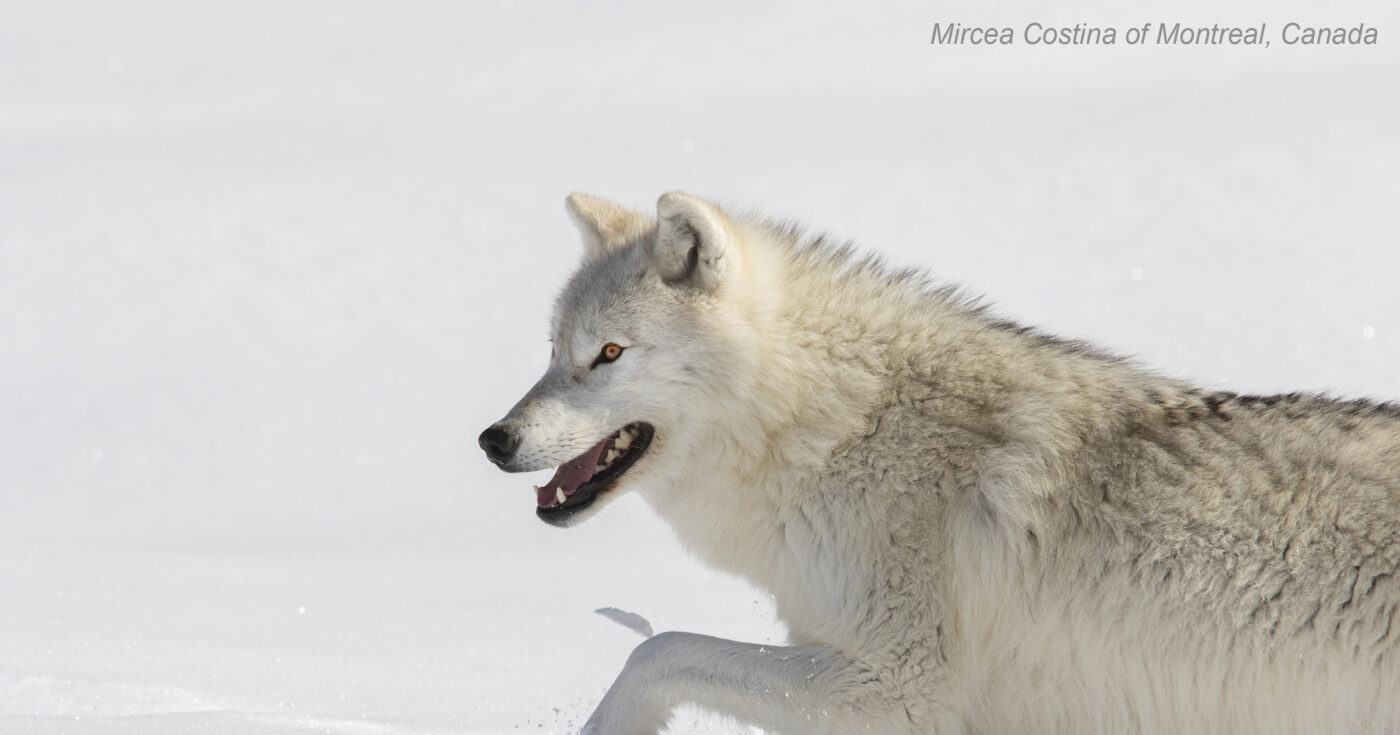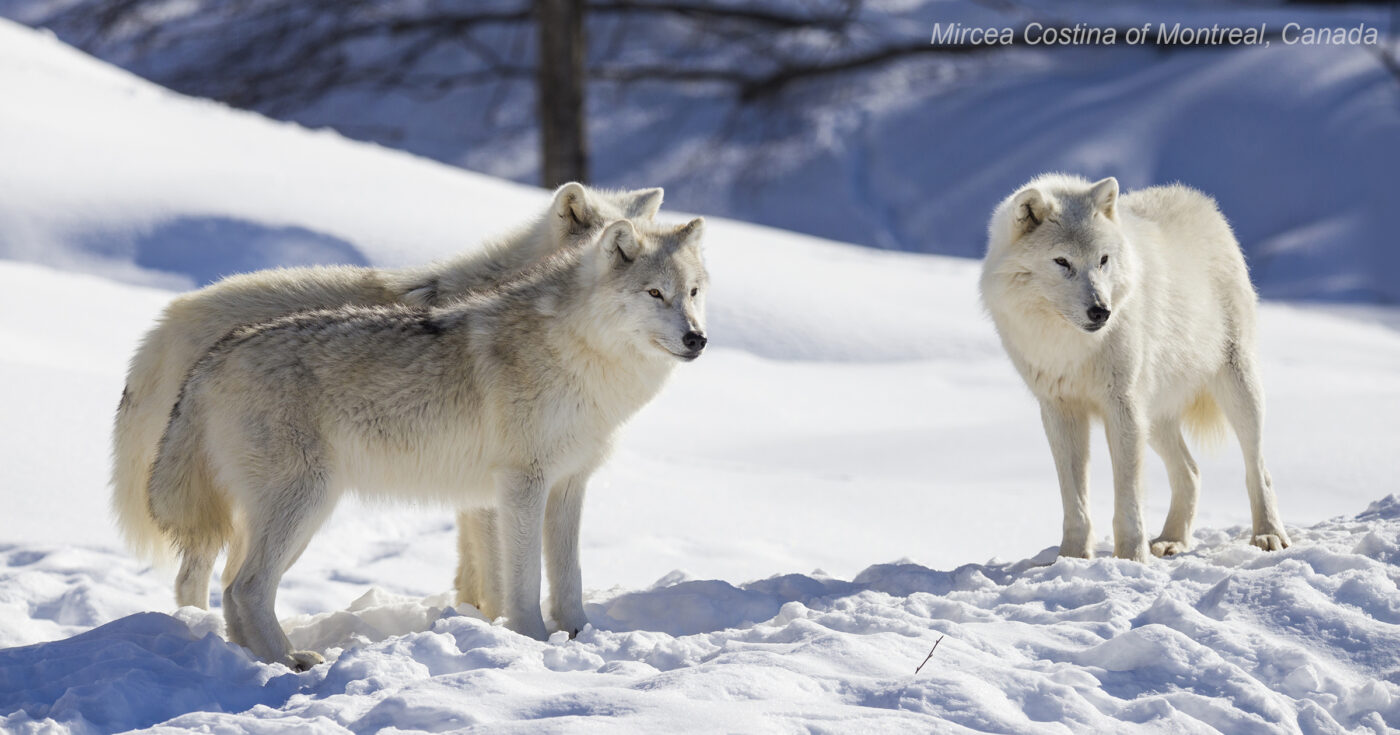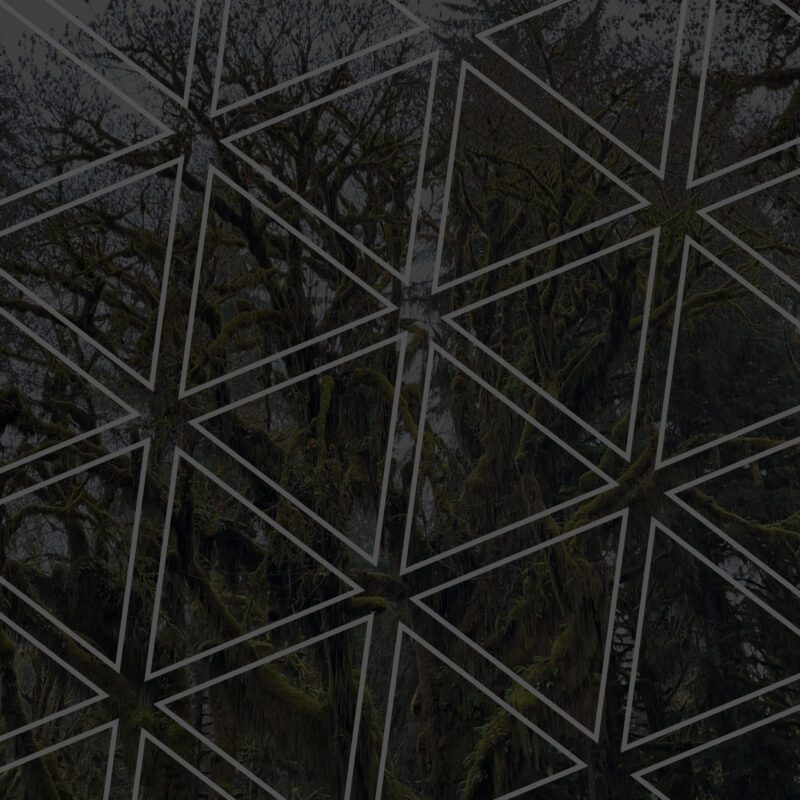The White Wolf
Written by Billy Timms
Photographs by wildlife photographer Mircea Costina of Montreal, Canada
Life is extreme, north of the tree line, where only frozen tundra and polar desert cover the land. The Arctic is a biodiverse region with thousands of species depending on shared resources. Caribou, muskox, hares, lemmings, and voles are among the primary consumers feeding on grasses, lichens, mosses, and sedges. Then there are the renowned predators: arctic foxes, polar bears, snowy owls, and the fascinating arctic wolf.
Canis lupus arctos, AKA the white wolf.
The arctic wolf, a rugged subspecies of the gray wolf, is well adapted to raw winters in Greenland and the North American Arctic. It has thick insulating inner fur to protect against sub-zero temperatures, a mostly white coat to blend in with snow, and shorter ears and nose to limit heat loss.

Arctic wolves are social animals that live in packs dominated by alpha pairs. Pups are born black or brown but grow dense, white fur by their first winter. While the dominant pair is typically the only couple to mate, all wolves in the pack care for the pups.
These impressive predators communicate through body language, scent, and a wide range of vocalizations such as barking, howling, huffing, whimpering, and whining. They hunt as a pack using a variety of tactics including tracking, ambushing, decoying, driving, and encircling.

Arctic wolves are apex predators in their natural habitat. They play an integral role atop their food chain in balancing the populations of muskox, arctic hares, and other mammals.

The white wolves of the north inhabit the Queen Elizabeth Islands. Isolated due to temperature extremes and lack of resources, this region has little contact with the mainland. This detachment has enabled them to develop unique characteristics apart from the rest of the wolves on Earth. It is important to allow a species such as this to continue evolving outside of captivity.
Fortunately, arctic wolves aren’t endangered. The IUCN Red List of endangered species categorizes the arctic wolf as a species of least concern. Still, the polar regions are on the front lines of the changing climate, and moving forward the arctic wolf population may be an indicator of the state of the natural world, like the pulse of life on Earth.
Beyond the predator and the prey.
– – –

Nature and the Environment was formed by BioTriad Environmental, Inc. to provide entertaining and informative media while keeping the wonders of nature in the public eye.

Our world is their hunting ground. Our back yards are their killing fields. They are the masters of land, sea, and sky, the balancers of ecosystems, and the most important predators on earth.


